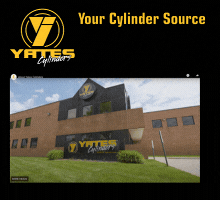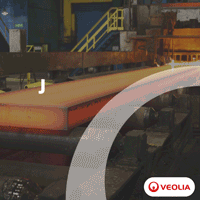ThyssenKrupp’s New Tinplate Treatment Fulfills Requirements of New Varnishes, Improves Surface Brilliance
05/26/2014 - Thanks to an innovative oiling process, ThyssenKrupp Rasselstein has solved problems that arise due to critical, very polar varnishes.
With a surface oiled in the usual way, very polar varnishes increase the risk of varnish wetting flaws, which are usually visible as pores. The alternative oiling eliminates this difficulty. The process has already been placed successfully on the market.
The interaction between varnish properties and the properties of the tinplate surface is essential for pore-free varnishing. "The keyword for the interaction is 'surface tension,' " explains project manager Dr. Helmut Oberhoffer."Modern varnishes that fulfill current requirements for environmental-friendliness and food compatibility actually tend to have higher rather than lower values for surface tension," is how Oberhoffer describes the path to further examination. "Accordingly, we concentrated on the tinplate surface tension in order to increase this."
The new method produces a series of advantages:
• the new process results in varnish wetting of the same and higher quality as compared to the standard and even as compared to tempered tinplate (a method that was used previously to improve varnish wetting).
• The surface tension values are sufficiently high that common and newly-developed, even BPA-free varnishes, can be processed reliably.
• The new surface allows direct printing without a prior base coat.
• At the same time, the brilliance of the tinplate surface is visibly improved.
• Adherence to relevant FDA and EU guidelines is proven.
• ThyssenKrupp Rasselstein has tested the alternative oiling extensively in the laboratory and under production conditions.
• The alternative oiling has already been placed successfully on the market.
Oberhoffer said: "The oiling of tinned packaging steel that we have developed will replace the standard oiling used previously. Wetting flaws, which previously occurred with critical, very polar varnishing, will be prevented by the alternative oiling."
The interaction between varnish properties and the properties of the tinplate surface is essential for pore-free varnishing. "The keyword for the interaction is 'surface tension,' " explains project manager Dr. Helmut Oberhoffer."Modern varnishes that fulfill current requirements for environmental-friendliness and food compatibility actually tend to have higher rather than lower values for surface tension," is how Oberhoffer describes the path to further examination. "Accordingly, we concentrated on the tinplate surface tension in order to increase this."
The new method produces a series of advantages:
• the new process results in varnish wetting of the same and higher quality as compared to the standard and even as compared to tempered tinplate (a method that was used previously to improve varnish wetting).
• The surface tension values are sufficiently high that common and newly-developed, even BPA-free varnishes, can be processed reliably.
• The new surface allows direct printing without a prior base coat.
• At the same time, the brilliance of the tinplate surface is visibly improved.
• Adherence to relevant FDA and EU guidelines is proven.
• ThyssenKrupp Rasselstein has tested the alternative oiling extensively in the laboratory and under production conditions.
• The alternative oiling has already been placed successfully on the market.
Oberhoffer said: "The oiling of tinned packaging steel that we have developed will replace the standard oiling used previously. Wetting flaws, which previously occurred with critical, very polar varnishing, will be prevented by the alternative oiling."



-(220-x-200-px)-(130-x-130-px)-(220-x-200-px).jpg?lang=en-US&ext=.jpg)
Veolia.gif?width=200&height=200&mediaprotectionhash=4deca34a0d5a00013b5a0ccdc2dcf98fd2c17aabb57eb7bbb27200552f29c247&ext=.gif)





